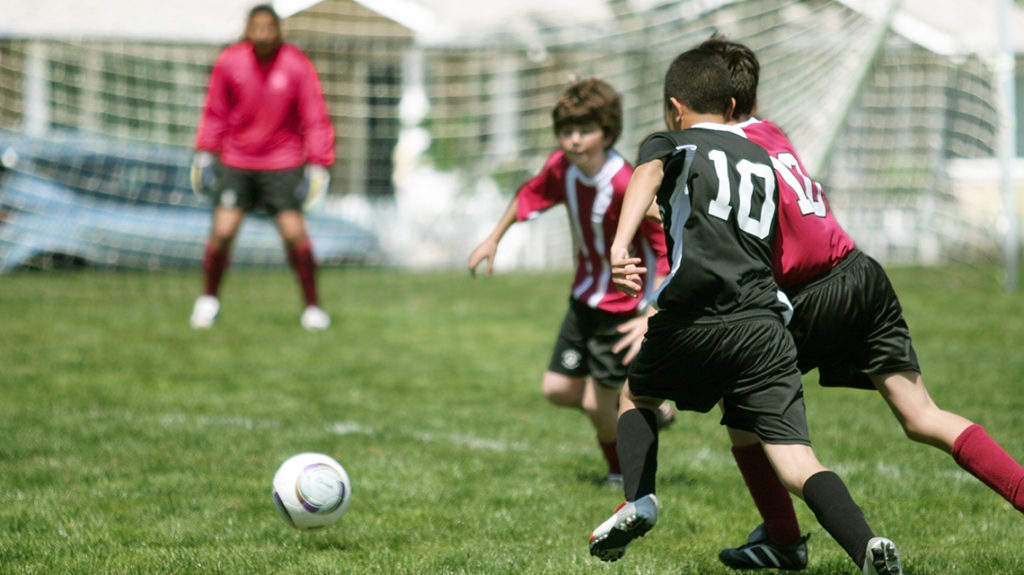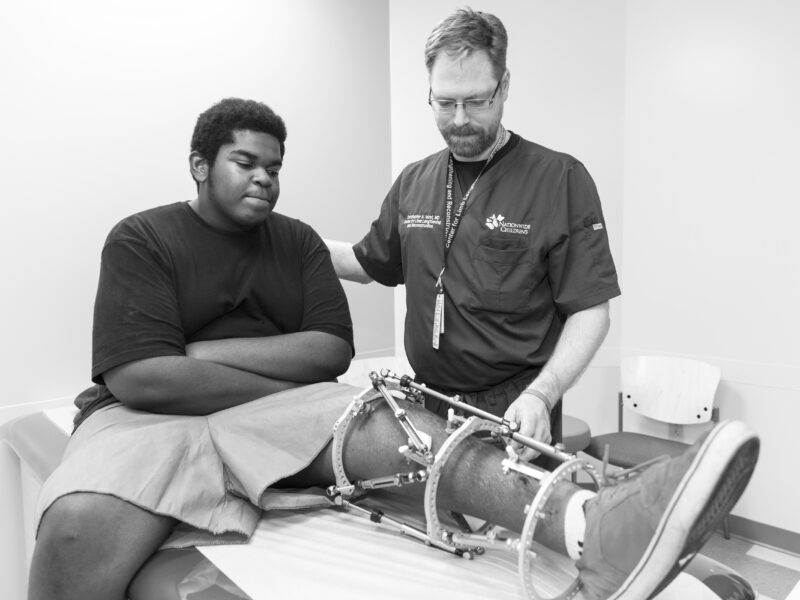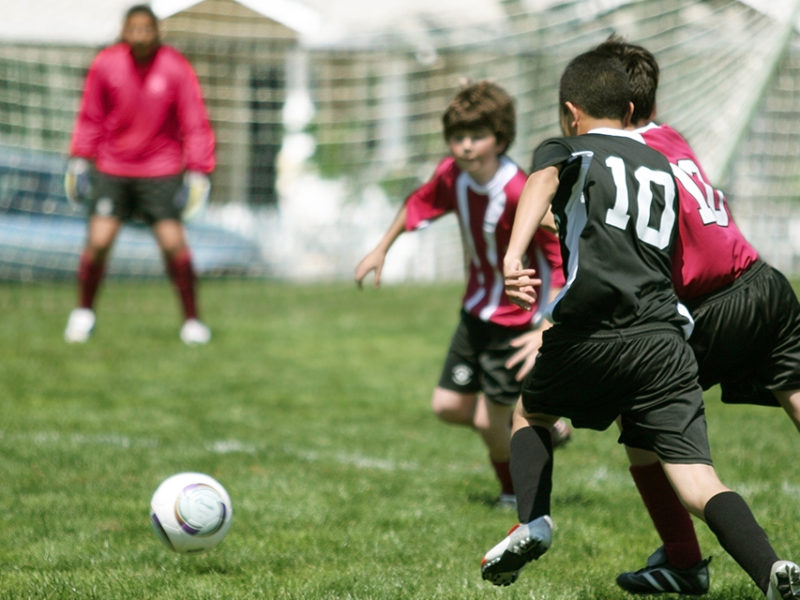Combining Multiple Surgical Procedures Helps Children With Patellar Instability Return to Normal Activities
Combining Multiple Surgical Procedures Helps Children With Patellar Instability Return to Normal Activities https://pediatricsnationwide.org/wp-content/uploads/2021/03/AdobeStock_646489_header-1024x575.jpg 1024 575 JoAnna Pendergrass, DVM JoAnna Pendergrass, DVM https://pediatricsnationwide.org/wp-content/uploads/2021/03/pendergrass_01.jpg- July 29, 2020
- JoAnna Pendergrass, DVM

A four-in-one surgical procedure demonstrates effectiveness in treating pediatric lateral patellar instability and helping children return to their normal pre-surgical activities.
Lateral patellar instability in the skeletally immature knee is a complex orthopedic condition with myriad treatment challenges. Classified as obligatory, fixed (congenital) or traumatic, pediatric knee instability can have painful consequences in late adolescence if not identified and managed early in life.
“If not managed, patellar instability in children can lead to long-term cartilage-related issues, such as patellofemoral arthritis,” says Kevin Klingele, MD, chief of Orthopedic Surgery at Nationwide Children’s Hospital.
Usually, patients and their parents do not realize that the instability is problematic until the patient is 5 to 10 years old and complaining of their kneecap popping in and out.
Numerous surgical procedures have been attempted, either singly or in combination, to treat this condition. However, these procedures have not been universally effective, leading to persistently high recurrence rates and more invasive surgical intervention.
A recent retrospective study in the Journal of Pediatric Orthopaedics reported the effectiveness of a 4-in-1 surgical procedure to realign lateral patellar instability in children. This procedure helped patients achieve good short-term clinical outcomes (e.g., return to sporting activity) with few complications.
Baruch Danino, MD, the study’s first author, participated in Nationwide Children’s scholar exchange program during the study. “The research support and mentorship from Dr. Klingele and his team were outstanding,” Dr. Danino says. He currently serves as the head of the Pediatric Hip Service at Tel-Aviv Sourasky Medical Center.
The investigators reviewed the medical records of 34 patients, aged 6 to 13 years, who underwent the 4-in-1 procedure to repair obligatory or fixed lateral patellar instability. “This is the largest reported cohort of patients for this procedure,” Dr. Klingele says.
Twenty-eight patients had obligatory instability and six had fixed instability.
The four surgical procedures were the Roux-Goldthwait procedure, vastus medialis obliquus advancement, Galeazzi procedure and lateral release. Postoperative follow-up duration ranged from 12 to 146 months.
Sixteen patients responded to the follow-up phone interviews and questionnaires. Pain was evaluated using the Kujala Pain Scale.
All 16 patients returned to pre-surgical activities of daily living (mean time, 10 weeks), and most (91%) also returned to pre-surgical levels of sporting or non-sporting activity (mean time, 22 ± 16 weeks).
Patients scored high on the Kujala Pain Scale (mean 93 ± 5.2), indicating a favorable return to function.
Long-term bracing was more common in patients with fixed instability than those with obligatory instability. However, this observation was not clinically significant because of the small patient population.
Complication rates were low, with 6/34 patients experiencing recurrent instability (5 obligatory, 1 fixed) that was managed with conservative bracing. Two superficial wound infections were reported and treated with oral antibiotics.
The study’s findings support the use of the 4-in-1 surgical procedure to treat lateral patellar instability in children. Ideally, it would be performed as first-line treatment for this instability, rather than after simpler and less effective techniques.
Dr. Klingele reiterates that obligatory or habitual lateral patellar instability is a surgical problem that cannot be resolved with bracing or physical therapy alone. He advises clinicians to identify and treat the instability early. “The younger the patients are treated, the better the joint will form, leading to better outcomes in the future,” he says.
Reference:
Danino B, Deliberato D, Abousamra O, Singh S, Klingele K. Four-in-one extensor realignment for the treatment of obligatory or fixed, lateral patellar instability in skeletally immature knee. Journal of Pediatric Orthopaedics. 2020. June 16.
Image credit: Adobe Stock
About the author
JoAnna Pendergrass, DVM, is a veterinarian and freelance medical writer in Atlanta, GA. She received her veterinary degree from the Virginia-Maryland College of Veterinary Medicine and completed a 2-year postdoctoral research fellowship at Emory University’s Yerkes Primate Research Center before beginning her career as a medical writer.
As a freelance medical writer, Dr. Pendergrass focuses on pet owner education and health journalism. She is a member of the American Medical Writers Association and has served as secretary and president of AMWA’s Southeast chapter.
In her spare time, Dr. Pendergrass enjoys baking, running, and playing the viola in a local community orchestra.
-
JoAnna Pendergrass, DVMhttps://pediatricsnationwide.org/author/joanna-pendergrass-dvm/
-
JoAnna Pendergrass, DVMhttps://pediatricsnationwide.org/author/joanna-pendergrass-dvm/
-
JoAnna Pendergrass, DVMhttps://pediatricsnationwide.org/author/joanna-pendergrass-dvm/
-
JoAnna Pendergrass, DVMhttps://pediatricsnationwide.org/author/joanna-pendergrass-dvm/
- Post Tags:
- Orthopedics
- Sports Medicine
- Posted In:
- In Brief










